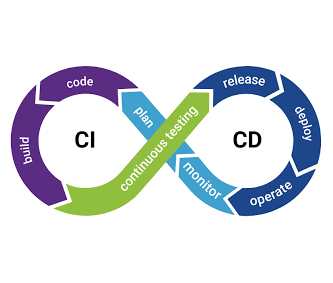| Advanced Best Practices for CI/CD Pipelines |
| Written by Gilad David Maayan | |||
| Monday, 13 November 2023 | |||
Page 1 of 2 The continuous integration and continuous delivery (CI/CD) pipeline is an integral part of modern DevOps practices, enabling software development teams to push code changes more frequently and reliably. As the intricacy and scale of software continue to expand, the necessity for sophisticated practices to effectively manage it is becoming increasingly evident. The 'CI' in CI/CD stands for Continuous Integration, a coding philosophy and set of practices that drive development teams to implement small changes and check in code to version control repositories frequently. The 'CD' stands for Continuous Deployment, which is closely related to Continuous Integration and refers to the release into the repository of software that passes the automated tests. CI/CD is a powerful tool used by modern software development teams to deliver software in a more streamlined, scalable, and reliable manner. This makes it important for development teams to go beyond the basics, seeking next-level practices and techniques that can make their delivery pipelines even more effective. The Need For Advanced Best Practices for CI/CD PipelinesCI/CD pipelines are a fundamental part of modern software development. However, with the increasing complexity and scale of software, there's a growing need for advanced best practices for managing these pipelines. These practices are not just about using the right tools or technologies, but also about creating a culture and environment where continuous integration and continuous deployment can thrive. Handling Complex ArchitecturesModern software architectures are becoming increasingly complex, with many moving parts and interdependencies. Managing these architectures can be a daunting task, especially when it comes to integrating and deploying changes. This is where CI/CD pipelines can help. They allow teams to automate the process of integrating and deploying changes, reducing the risk of errors and ensuring that all parts of the system work together as expected. However, handling complex architectures requires more than just automation. It also requires a deep understanding of the system's architecture and its dependencies. Developers need to be able to model the system in the pipeline, understand how changes in one part of the system affect others, and ensure that the system remains stable and functional at all times. Ensuring Security and ComplianceIn today's world, security and compliance are non-negotiable. Any breach can lead to serious consequences, including damage to the company's reputation and financial loss. As such, it's crucial to ensure that all code changes are secure and compliant with relevant regulations. CI/CD pipelines can play a key role in this. By automating the process of integrating and deploying code changes, they can help to prevent human errors that could lead to security vulnerabilities. They can also be used to enforce compliance checks, ensuring that all changes meet the required standards. However, ensuring security and compliance in CI/CD pipelines requires a proactive approach. Teams need to regularly update their pipelines to reflect new security threats and compliance requirements, and they need to regularly audit their pipelines to detect any potential vulnerabilities. Maintaining Quality at SpeedOne of the main benefits of CI/CD pipelines is that they enable teams to deliver changes more quickly. However, this speed should not come at the expense of quality. It's crucial to ensure that all changes are thoroughly tested and that the overall quality of the software remains high. CI/CD pipelines help to maintain quality by automatically running tests on every change. This not only helps to catch bugs early but also ensures that all changes are compatible with the existing system. It also allows teams to get immediate feedback on the impact of their changes, enabling them to make improvements quickly. However, maintaining quality at speed requires more than just automated testing. It also requires a strong culture of quality, where everyone is committed to producing the best possible software. It requires regular reviews and retrospectives to identify areas for improvement, and a willingness to invest in the resources necessary to maintain quality. Reduction of Downtime and Quick RollbackDowntime can be costly for any business, and it's something that every software team wants to avoid. CI/CD pipelines can help to reduce downtime by ensuring that all changes are integrated and deployed smoothly. They can also help to detect any issues early, before they affect the end users. In addition to reducing downtime, CI/CD pipelines can also enable quick rollback. If a problem is detected after a change has been deployed, the pipeline can automatically rollback the change, restoring the system to its previous state. This can help to minimize the impact of any issues and ensure that the service remains available to users. However, reducing downtime and enabling quick rollback requires careful planning and monitoring. Teams need to regularly review their pipelines to ensure that they are functioning as expected, and they need to have a plan in place for handling any issues that arise. |
|||
| Last Updated ( Monday, 13 November 2023 ) |
